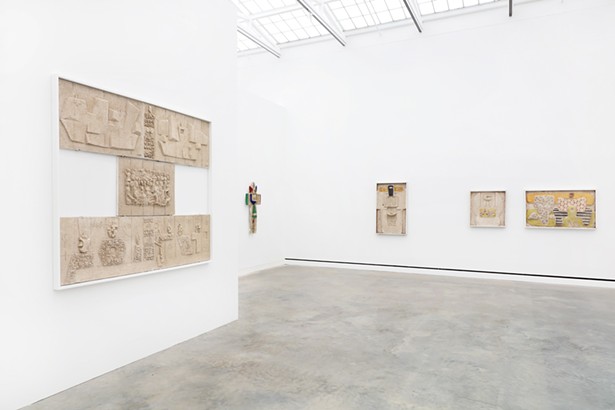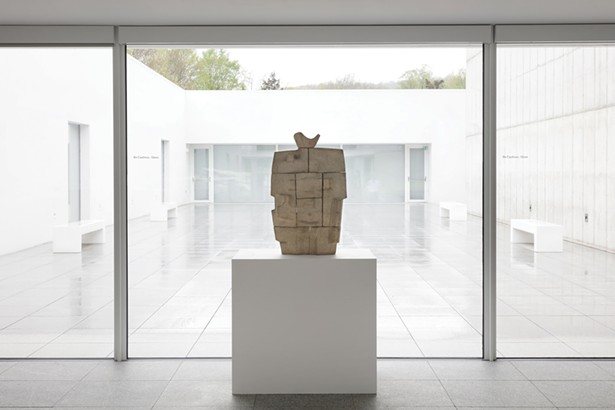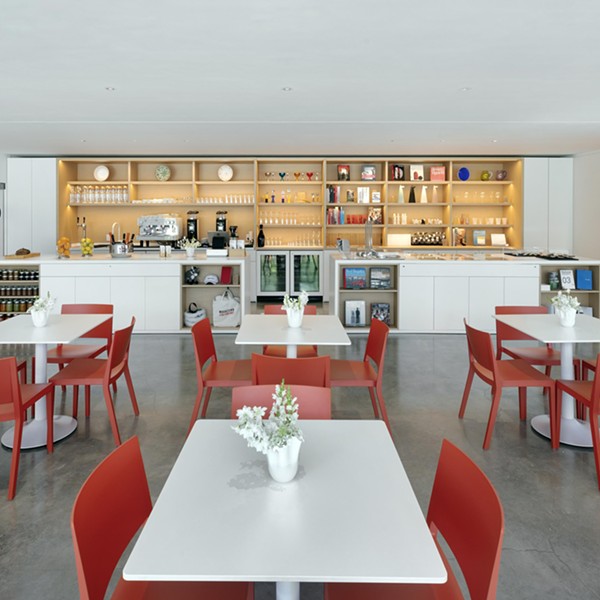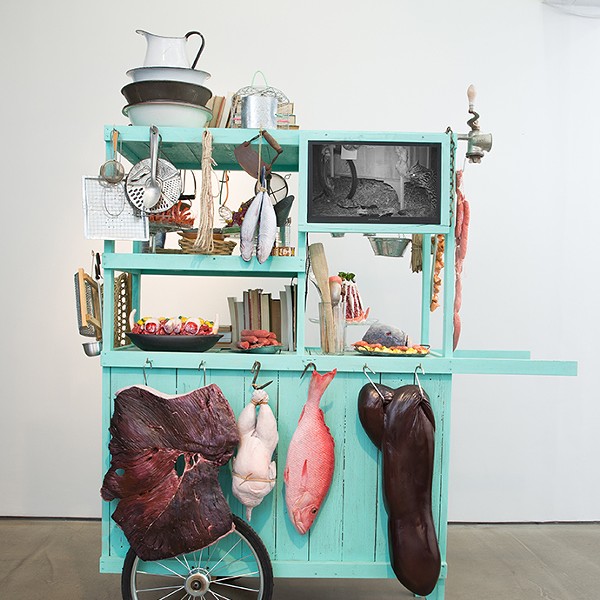
Magazzino is a gem of a museum, tucked away in a corner of Cold Spring, in a former dairy warehouse. (“Magazzino” means warehouse.) Admission is free. As the name suggests, the art is Italian—in particular, art since World War II. The staff is so warm and welcoming, one expects them to spontaneously serve lunch.
Last year, Magazzino opened a new gallery for temporary exhibitions. The current one is “Nivola: Sandscapes.” Known as an “architect’s sculptor,” Costantino Nivola was close friends with visionary Swiss designer Le Corbusier. Nivola’s public sculptures are in schoolyards and housing projects throughout New York City.
The show was curated by Teresa Kittler, last year’s scholar-in-residence at Magazzino. Chiara Mannarino served as assistant curator.
Nivola was born in Sardinia in 1911, and worked as a graphic designer in Milan when he married Ruth Guggenheim in 1938. Fascist Italy was unsafe for his Jewish wife, so they decamped to Paris, then to New York City. Nivola worked in factories, then as art director for Interiors magazine, until he received his first major commission, for the Olivetti showroom in New York (1953).
The sandscapes fall between genres: not exactly design, or architecture, or sculpture. They look like bas-reliefs for a hoax ancient civilization, created to trick journalists. Nivola seems to have developed a secret visual language. Certain motifs recur in his work, like hieroglyphs on an Egyptian sarcophagus. (Nivola visited Egypt in 1964 and took films of the pictographs, to study.) He has a love of symmetry, which is never obsessive.

I see lots of influences: Assyrian wall-carving, the Venus of Willendorf, comic strips, Rodin’s Gates of Hell, Rosicrucian symbols, the ancient Nuragic civilization of Sardinia. Even Christianity appears, in early sculptures that Nivola called “totems.” One piece from 1953 takes the form of an abstracted crucifix. Nivola made all these sculptures by hand. His father was a mason, and he himself was a highly skilled craftsman.
In numerous maquettes preparing for his Olivetti commission, one sees Nivola working out his ideas for the wall—including six rows of dots: a stylized typewriter. Hieroglyphs taught him how to reduce an idea to its simplest visual form. His wall-sculpture for the Bridgeport Post building takes the form of a newspaper, complete with (unreadable) writing and an American flag.
I also sense humor in his work. Am I imagining that? I ask Mannarino. “He’s such a joker!” she replies. “His daughter said that he couldn’t make work when he was mad. There’s definitely comedy to it.”
The “sandscapes” appear to be magically composed of congealed sand, but are actually mostly plaster or concrete, with a thin layer of sand chemically bonded to the substrate. The artist invented this process, which conceptually connects the deserts of Egypt to his local sands of Long Island, which he used to create these sculptures. “In some of them, there are tiny rocks attached to the sand,” Mannarino observes. “You can picture him in Springs, at the beach, picking up little bits of rock with the sand.” Nivola conceived these “sandscapes” while playing with his kids at the beach.
Nivola lived in Springs for many years, the town outside East Hampton that became a world-famous artist colony in the 1950s: Jackson Pollock and Willem de Kooning were the big stars, but there were numerous supporting characters. The witty, metaphysical cartoonist Saul Steinberg was across the street from Nivola. Le Corbusier created two murals in Nivola’s house. And Marilyn Monroe visited him!
Even if you don’t see the show, I recommend the futuristic 3-D digital tour on the Magazzino website.
















